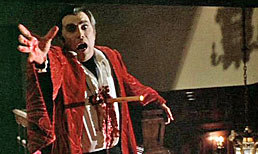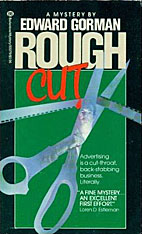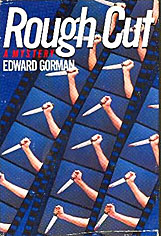JOANNE DOBSON – The Maltese Manuscript. Poisoned Pen Press, hardcover, 2003; softcover, 2006. ibooks, mass market paperback, May 2004.

I haven’t been reading the recent crop of cozy mysteries very much any more. They’ve become too soft and fluffy for me. Too much giddy character interplay, too much emphasis on hobbies, quilting or cooking, and worst of all, too little puzzle or mystery. They’re meant for female readers who can’t get enough of them, not for men who want hardboiled PI stories or old folks like me who want real detective work and/or surprise twists in their tales. So I pass them by, and have been for quite a while.
With exceptions. While this one may not be recent, it is a cozy by nature, being one of a series of mystery adventures had by a Women’s Studies professor at a small elite college in a fictionalized version of the Amherst MA area. What it does have is a gimmick encapsulated in the title that caught my immediate attention anyway, as it may have already snagged yours as well.
Part of the detective fiction holdings at Enfield College is the original manuscript of The Maltese Falcon, annotated and corrected in Hammett’s own hand. Valuable? I’d say so, if it existed. (Does it?) But when it disappears during a crime fiction conference at the school, the dean wants the incident hushed up. Who’d donate to any library that has such poor security in place?

Karen Pelletier is the professor referred to in paragraph two, and with the assistance of mystery writer Sunnye Hardcastle, creator of he extremely popular PI Kit Danger books, plunges right into solving both the theft of the manuscript and more, the mysterious death of a nighttime intruder in the underground stacks of the school’s library.
Complicating matters is that Karen’s boy friend is Lt. Charlie Pietrowski of the local police force, who doesn’t want her butting in, and a PI named Dennis O’Hanlon whom Karen meets up with again at a high school reunion, and coincidence be damned, he has just been hired by the dean to worr undercover while investigating the theft. That Karen is attracted to him causes some problems, wouldn’t you know?
After some slow going in the first 80 or pages, the book takes off at last, as the investigation finally begins. There is a lot of witty and wry commentary on the academic approach to deconstructing mystery fiction along the way, and a book thief’s storage houses for the thousands and thousands of the valuable first edition mystery hardcovers he’s stolen from libraries all across the country would be a sight to behold, if it ever existed.
A minor work, when all’s said and done, but it’s still fun while it lasts. And as a final postscript, let me add that the quoted portions of Sunnye Hardcastle’s novels are patently (and joyously) awful.
The Karen Pelletier series —
1. Quieter Than Sleep (1997)
2. The Northbury Papers (1998)
3. The Raven and the Nightingale (1999)
4. Cold and Pure and Very Dead (2000)
5. The Maltese Manuscript (2003)
6. Death Without Tenure (2010)


